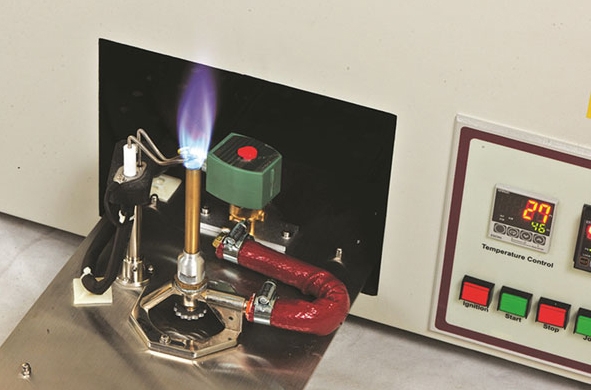-
Understanding the Testing Principles of Gas Fume Colorfastness
Edited by:Read:Gas fume color fastness testing measures the ability of a textile or other material to resist color change or fading when exposed to gases such as oxides of nitrogen, sulfur dioxide, and ozone. The testing principles involve exposing a sample of the material to a controlled concentration of the gas in a test chamber, for a specified period of time. The gas concentration, exposure time, and environmental conditions are controlled and monitored to ensure that the testing conditions are consistent and reproducible.
During the exposure period, the gas molecules interact with the dye molecules in the material, causing a chemical reaction that can result in a change in color or fading of the material. After the exposure period, the material is evaluated for color change using a colorimeter or spectrophotometer. The color difference is calculated between the exposed sample and an unexposed reference sample, and the results are expressed as a numerical value.

The testing principles of gas fume colorfastness involve several key factors that can affect the results of the test. These factors include the type and concentration of gas used, the exposure time, the environmental conditions in the test chamber, and the method of color measurement. It is important to carefully control these factors to ensure that the test results are accurate and reproducible.
Gas fume color fastness testing is an important measure of the durability and quality of textiles and other materials. It provides valuable information on the ability of a material to resist color fading and change when exposed to environmental factors, such as air pollution. By understanding the testing principles of gas fume colorfastness, manufacturers and consumers can make informed decisions about the materials they choose and the conditions under which they are used.
- 2024-04-19Paper ring compression strength tester standards
- 2024-04-19Cupping tester standards
- 2024-04-19Rubber and plastic tensile tester standards
- 2024-04-19Taber 1750 wear-resistant tester standards
- 2024-04-19Stone Chip Resistance Gravelometer standards
- 2024-04-18Diaper absorption speed tester standards
- 2024-04-18Diaper leakage tester technical indicators
- 2024-04-18Paint film impact resistance tester standards
- 2024-04-18Low temperature brittleness tester principle
- 2024-04-18Battery separator permeability tester technical indicators



